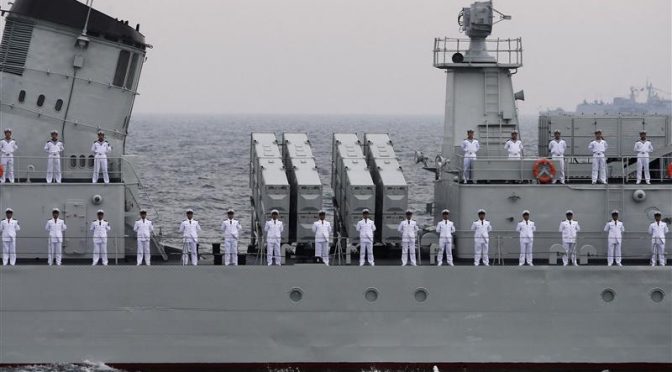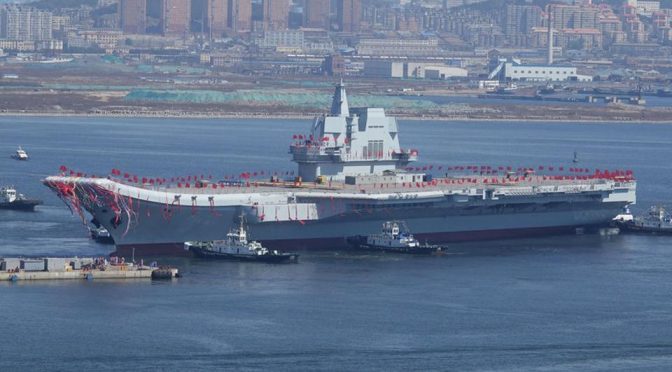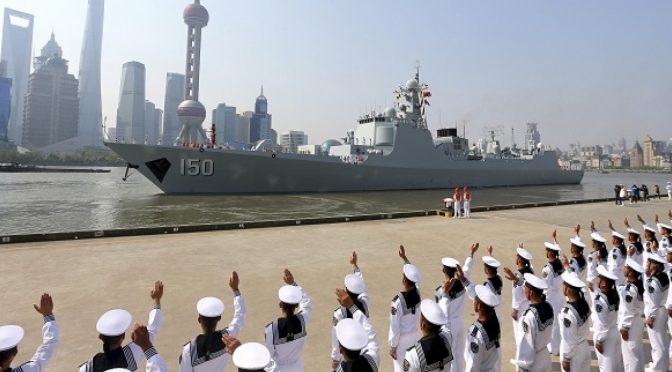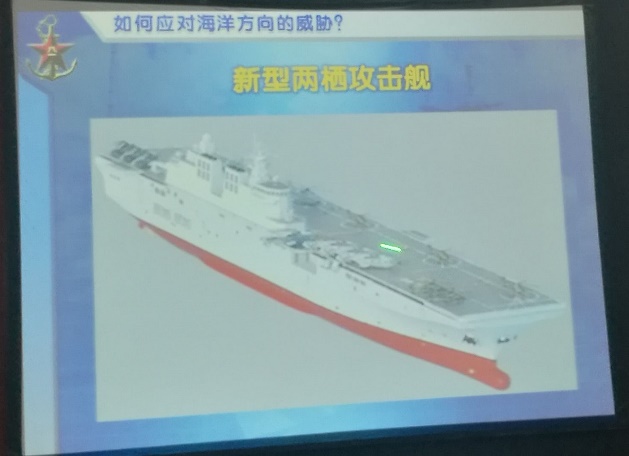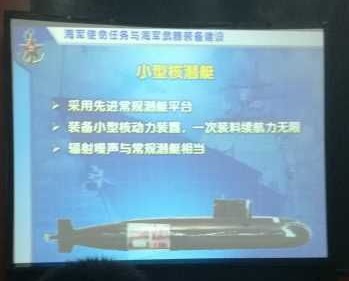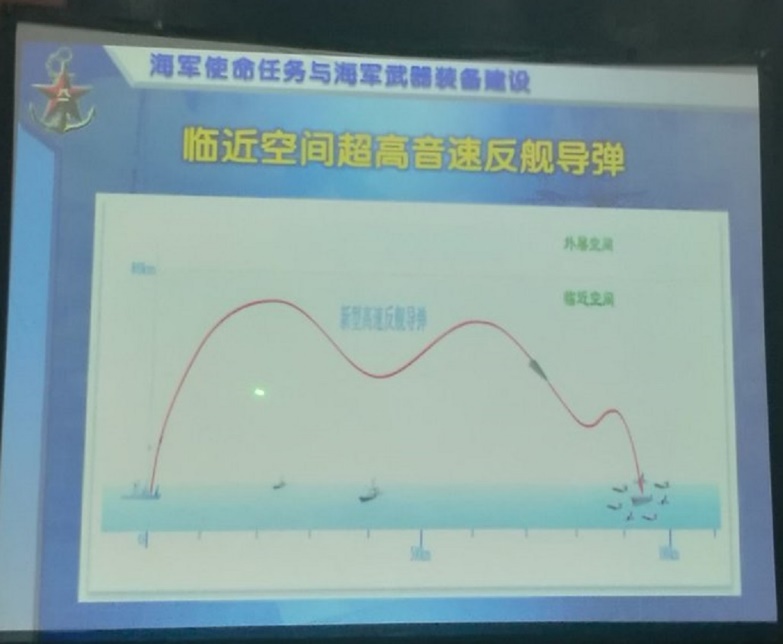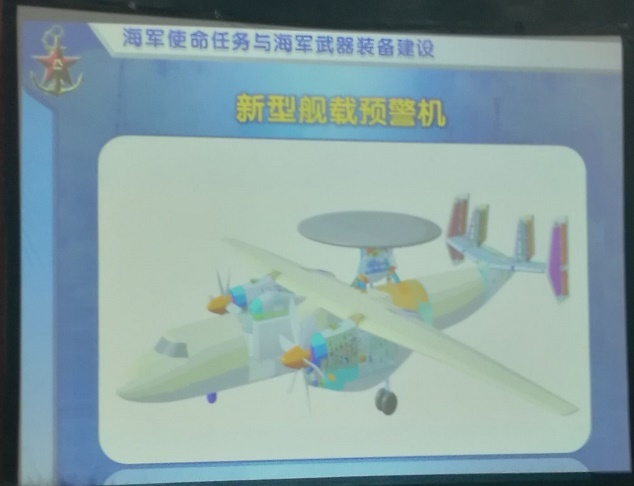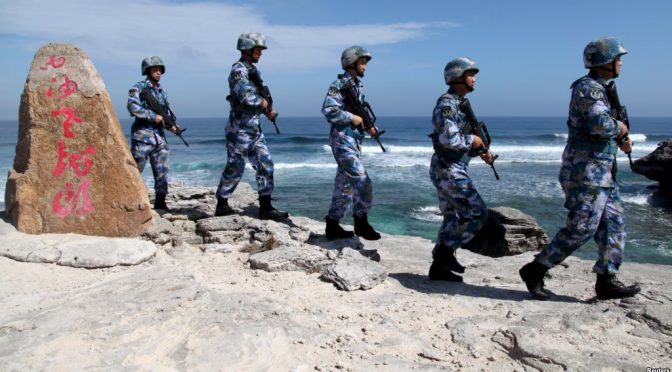By Pawel Behrendt
Great power competition and arms races are back, especially in Asia. According to the Stockholm International Peace Research Institute (SIPRI) Asia and Oceania countries in 2017 were responsible for 27 percent of global military expenditures. In absolute numbers it totalled U.S. $477 billion. Three out of the 15 top spenders are located in North East Asia: China ($228 billion), Japan ($45.4 billion), and South Korea ($39.2 billion).
Given the role of maritime trade for the economies of these three powers it is no surprise that navies are an important part of their military budgets. But maintaining old and ordering new warships is not everything. The shape of naval force employment is dependent on doctrine and strategy. These in turn depend on threat perception, political and economic needs, as well as ambitions.
Japans’ maritime strategy and naval doctrine has been very stable during the last half century. Recent changes that aim to grow the capability of the Maritime Self Defence Forces (MSDF) are rather minor. On the flipside, the People’s Liberation Army Navy (PLAN) and the Republic of Korea Navy (ROKN) underwent radical development in the past two decades, reshaping them from brown water into green water navies with the eventual ambition to become blue water forces. Many of these changes are, especially in the case of South Korea, surprising and unexpected.
Japan
“Generally, naval power was born from the need to preserve freedom of the seas, enabling sea lanes of communications (SLOCs) and economic growth to prosper and expand.”1 – Admiral Tomohisa Takei (MSDF)
Protecting SLOCs along with “Defense of Surrounding Waters” is the most important task of the MSDF. Given Japan’s dependence on sea trade it is no surprise, however the current doctrine is equally the result of the experience of World War II and post-war pressure by the United States as a political-economic calculation. During the war the effects of unrestricted submarine warfare by the U.S. Navy were devastating to the merchant marine of Japan. The protection of merchant shipping proved to be inadequate, nearly 85 percent of the pre-war tonnage had been sunk.2
After the war the protection of sea lanes was advanced as a priority to be fulfilled by rebuilding the naval forces of Japan. Thus till the late 60s lasted an intensive debate between supporters of a strong navy oriented toward SLOC protection and a limited ant-invasion force. The main potential invader was then the Soviet Union. Finally the dispute resulted in a more balanced fleet, capable of both effective escort operations at range and the defense of its own coast. Such doctrine was supported by the Pentagon. The U.S. Navy needed an efficient ally, able to protect naval bases, but simultaneously able to secure SLOCs in the Pacific. Such a division of tasks would allow the devoting of more U.S. forces for offensive operations.3 At the same time the growing Japanese economy became more dependent on maritime shipping and a better understanding of the importance of SLOCs emerged.4 Japan has become a crucial and indispensable ally of the U.S. in East Asia, fomenting a deep interoperability between the U.S. Navy and MSDF.
Geopolitical changes after 1991 at first did not greatly influence the naval doctrine of Japan. An Escort Flotilla has remained up until today the main unit. Currently there are four such Flotillas (1-4) based in Yokosuka, Sasebo, Maizuru, and Kure. Each unit is grouped around a helicopter destroyer and two Aegis destroyers plus five smaller combatants, usually frigates. Changes came during the 90s and early 2000s. Expanding international activities, terrorism, and the rise of China pressed the MSDF to pursuit new capabilities. The first visible sign of changing attitude was the procurement of Ōsumi-class amphibious landing ships. For the first time since World War II Japan was capable of power projection. Next was the refueling mission during Operation Enduring Freedom in Afghanistan where MSDF logistics ships refuelled coalition ships in the Indian Ocean, and anti-piracy missions off the coast of Somali. This latter mission brought the first Japanese overseas base in Djibouti and a larger appreciation of unconventional threats at sea.5

Now the main challenge has become China, who also strongly depends on maritime transportation. The growing quantity and quality of the People’s Liberation Army Navy only strengthened its ability to protect SLOCs. What’s more, fear of potential invasion has returned and is more and more visible in the military planning of Japan.6 This new threat perceptino gained the name of “Counterbalancing China.”7 Hence, despite growing rivalry between both states and Japan’s pursuit of power projection capability, escort tasks and coastal defense continue to be the main duties of MSDF.
The People’s Republic of China
During the last 20 years the People’s Liberation Army Navy (PLAN) has come a long way. Since 1949 there were two main missions for Chinese naval forces: reunification (invasion) of Taiwan and coastal defense. During the 80s lack of funds and concentration on continental threats led Admiral Liu Huaqing8 to the “offshore defense” doctrine. It focused on operations within China’s Exclusive Economic Zone (EEZ), what admiral Liu characterized as the Yellow Sea, South, and East China Seas, as well as waters around Taiwan and Okinawa. An additional task was nuclear deterrence. However, the main tasks of the PLAN largely stayed the same in spite of these ambitions. During the 90s economic changes, U.S. led operations in Iraq, Serbia, and the Taiwan Strait Crisis of 1996 gave impetus to change. Admiral Liu and his adherents were given arguments to expand the bounds of maritime capabilities beyond coastal waters. It resulted in the doctrine of “distant sea defense.” It asserted an intensive naval buildup and was defined not by geographical limitations but by the PRC’s maritime needs.9
A turning point for the PLAN was the year 2004, when President Hu Jintao called for pursuit of capability to sustain a maritime presence in strategic locations, in hostile conditions, and for extended periods. The doctrine of “distant sea defense” still encompassed the Taiwan issue and coastal defense but now also the distant protection of maritime sovereignty. This helped intensify the East and South China Seas disputes, and provided China with a long-term goal of effective defense of crucial SLOCs and in the future (perhaps around 2050) of becoming a global naval power.10
Even more attention has been paid to naval forces since Xi Jinping came to power. His “Belt and Road Initiative” greatly emphasizes the value of maritime communication. Under BRI China has invested about $44 billion in port infrastructure both at home and in other countries while further foreign investments of nearly $20 billion were declared for the near future. Especially interesting projects are the China-Pakistan Economic Corridor, along with highways, railways, and pipelines connecting the coastal regions of Myanmar with Yunnan province and Kra Canal in the Malaya Peninsula. All of these aim in part to solve the “Malacca Dilemma” and reduce China’s dependence on the maritime chokepoints of Southeast Asia.11 Still it does not diminish the role of the South China Sea as a crucial waterway leading through the chokepoints in Indonesia and Malaya. Hence strengthening military presence in the region and pursuit for the capability to control it fuels China’s policy in the SCS dispute as well as prestige issues and protecting national resources.
More military-oriented aspects of BRI are growing PRC naval presence in the Indian Ocean and the great expansion of the PLAN Marine Corps which is expected to increase fivefold. This force now numbers 20,000 soldiers organized into two brigades, but the goal is as many as 100,000 troops in six brigades. This does not mean only the formation of new units, as it was reported that two brigades from the Ground Force had been subordinated to the Navy. The main task of this huge force would be the protection of the maritime thread of the New Silk Road and defense of the overseas interests of the PRC. The Chinese Marines are already stationed in Djibouti and have appeared in Gwadar, Pakistan. Both garrisons are rumored to have as many as 10,000 soldiers. Still such a great buildup causes many problems. The PLAN Marine Corps lacks experience in expeditionary missions and does not have sufficient equipment. What is more, a force that has spent years preparing mainly for an invasion of Taiwan and operations in nearby waters of South and East China Seas requires a thorough reorganization to face new, global tasks.12
All of this concerns the whole PLAN as well. As of January 2018 the PLAN had in service 26 Type 054A class frigates13 and 39 Type 056 class corvettes.14 These escort vessels are the real workhorses of the Chinese Navy. Both classes are more developed toward the anti-submarine warfare (ASW) mission. As was unofficially disclosed in the perception of the Chinese admiralty one of the biggest threats to both military and merchant ships are submarines, especially the conventionally-powered vessels of the MSDF. Thus the development of ASW capability has become a top priority.15 On the other hand experience in escort missions was gained during the anti-piracy mission off the coast of Somalia. The permanent presence of the PLAN in the Horn of Africa is also a key milestone in the process of building a blue water navy.”16
Republic of Korea
The Republic of Korea (ROK) is a very interesting case. Despite the location on the Asian mainland, in geopolitical terms it is effectively an island. The Democratic People’s Republic of Korea (DPRK) separates South Korea from the rest of the Asian mainland. Also in economic terms the ROK is virtually an island nation, 99 percent of its exports and imports go via sea.17 Since the end of the Korean War the main task of South Korean naval forces was the defense of littoral areas against the North and securing the EEZ against intrusions of foreign fisherman.18
Similarly as in China the situation changed in the 90s. One of the results of its economic boom was a deepening dependence on SLOCs as well as growing overseas interests. In 1995 then Chief of Naval Operations Admiral An Byoung-Tae called for the construction of a blue water navy. Admiral Byoung-Ta’s ambitions were endorsed by President Kim Young-Sam and he in effect became to the ROKN the same as Admiral Liu Huaqing was to PLAN.
However, the vision of President Kim remains quite far from the concepts of military planners from China and Japan. Kim defined two areas of operations: East Asia for the long term and the Indian Ocean and the Strait of Hormuz for short term missions. He emphasized participation in multinational coalitions and thus giving South Korea more influence on the international arena and better ability to shape near and far political environments.19
During the last 20 years South Korea has now built naval power second in East Asia only lesser than that of China and Japan. Thanks to several landing ships, three Aegis destroyers, and nine smaller destroyers the ROKN has gained noticeable power projection capability. The recent arming of destroyers with cruise missile has built a credible deterrence capability against not only DPRK but also China, Japan, and Russia.20 However, ASW and mine countermeasure (MCM) capabilities lay far behind. According to the MSDF, South Korean naval forces are unable to protect the crucial link to the ROK’s economy, the Tsushima Strait. The solution to this situation could be closer cooperation with Japan, but it is greatly hampered by strong anti-Japanese sentiment and several territorial disputes.21
Insufficient ASW and MCM capabilities were noticed and addressed by ordering new frigates and mine hunters. Still, in the case of frigates more attention was paid to include them into the national anti-missile defense system than increasing their ASW capabilities. Such a stance is incomplete given the threat posed by DPRK’s midget and small submarines. An example here is the fate of the Cheonan corvette that was sunk by a North Korean submarine.22
Conclusion
The SLOCs are lifelines for the dynamic economies of East Asia. As CSIS estimates any long closing of the Strait of Malacca would generate costs, about $350 million after one month, that would have an impact not only in regional but also in global scale.23 Thus the protection of merchant shipping and the secure delivery of hydrocarbons remain crucial tasks of nearly all mentioned naval forces.
Pawel Behrendt is a Political Science Ph.D. candidate at the University of Vienna. He is an expert at the Poland-Asia Research Center and is the deputy chief-editor of konflikty.pl. Find him on Twitter @pawel_behrendt.
References
[1] Tomohisa Takei, Japan Maritime Self Defense Force in the New Maritime Era, Tokyo 2008, p. 2.
[2] Takei, p.3.; more on SLOCs in the doctrine of Imperial Japanese Navy: Euan Graham, Japan’s Sea Lane Security, 1940-2004: A Matter of Life and Death?, New York 2006, pp. 63-89.
[3] Graham, pp. 118-120.
[4] IGraham, pp.123-129
[5] Graham, pp.185-200, Alessio Patalano, Japan as a Seapower: Strategy, Doctrine, and Capabilities under Three Defence Reviews, 1995–2010, in: Journal of Strategic Studies Volume 37, 2014 – Issue 3: Rising Tides: Seapower and Regional Security in Northeast Asia, pp. 403-441.
[6] Yuji Kuronuma, Japan’s military chief warns on China naval expansion, Nikkei Asian Review, 19.01.2018 (www.asia.nikkei.com/Politics-Economy/International-Relations/Japan-s-military-chief-warns-on-China-naval-expansion)
[7] Bjørn Elias Mikalsen Grønning, Japan’s Shifting Military Priorities: Counterbalancing China’s Rise, in: Asian Security Volume 10, 2014 – Issue 1, pp. 1-21.
[8] Liu Huaqing (1916-2011), known as the father of modern Chinese Navy, more about his life and theories: Daniel Hartnett, The Father of the Modern Chinese Navy—Liu Huaqing, Center for International Maritime Security (www.cimsec.org/father-modern-chinese-navy-liu-huaqing/13291)
[9] Office of Naval Intelligence, The People’s Liberation Army Navy. A Modern Navy with Chinese Characteristics., Suitland 2009, pp. 5-6.
[10] Hartnett; Office of Naval Intelligence, The PLA Navy. New Capabilities and Missions for the 21st Century, Suitland 2015, pp. 5-9.
[11] Pawel Behrendt, The Maritime Silk Road, Centrum Studiów Polska-Azja, 10.08.2017 (www.polska-azja.pl/analiza-cspa-13-morski-jedwabny-szlak/).
[12] Pawel Behrendt, The Growing Dragon: The Radical Reorganization of the PLA, 03.05.2018 (https://cimsec.org/?s=growing+dragon)
[13] Gabriel Dominguez, PLAN inducts Type 054A frigate into North Sea Fleet, Jane’s 360, 15.01.2018 (www.janes.com/article/77048/plan-inducts-type-054a-frigate-into-north-sea-fleet).
[14] Henri Kenhmann, Bientôt 40 corvettes Type 056 dans la marine chinoise, East Pendulum 16.01.1018 (www.eastpendulum.com/bientot-40-corvettes-type-056-marine-chinoise).
[15] Kenhmann, La marine chinoise multiplie les moyens anti-sous-marins, East Pendulum 20.11.2016 (www.eastpendulum.com/marine-chinoise-multiplie-moyens-anti-sous-marins)
[16] Emanuele Scimia, Anti-piracy mission helps China develop its blue-water navy, in: Asia Times 08.01.2018 (www.atimes.com/anti-piracy-mission-helps-china-develop-blue-water-navy/)
[17] Mingi Hyun, South Korea’s Blue-water Ambitions, The Diplomat 18.11.2010 (www.thediplomat.com/2010/11/south-koreas-blue-water-ambitions/)
[18] Paul Pryce, The Republic of Korea Navy: Blue-Water Bound?, Center for International Maritime Security 28.01.2016 (www.cimsec.org/the-republic-of-korea-navy-blue-water-bound/21490).
[19] Hyun.
[20] Adam M. Maciejewski, Skrzydlate pociski manewrujące Republiki Korei, in: Wojsko i Technika 12/2017, pp. 30-37.
[21] Pryce.
[22] Pryce
[23] CSIS China Power Project, , How much trade transits the South China Sea? (www.chinapower.csis.org/much-trade-transits-south-china-sea/).
Featured Image: Chinese Navy sailors take part in an international fleet review to celebrate the 60th anniversary of the founding of the People’s Liberation Army Navy in Qingdao, Shandong province in this April 23, 2009. (REUTERS/Guang Niu)

